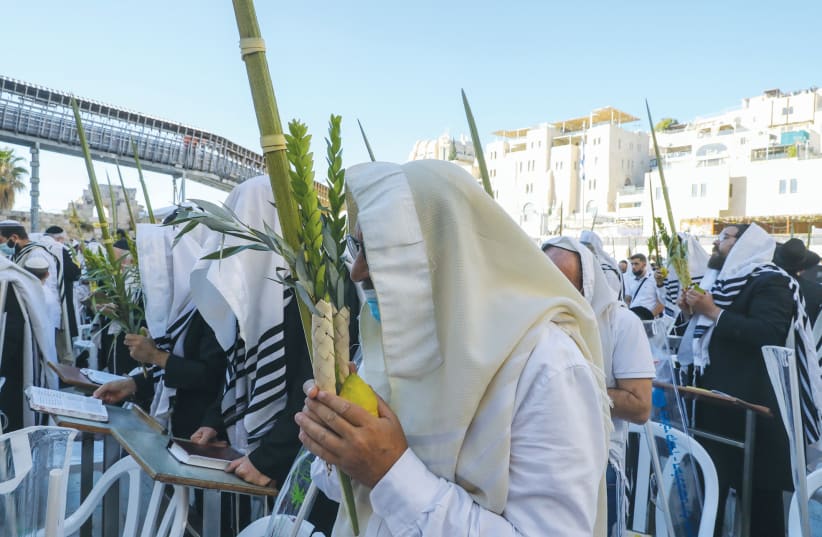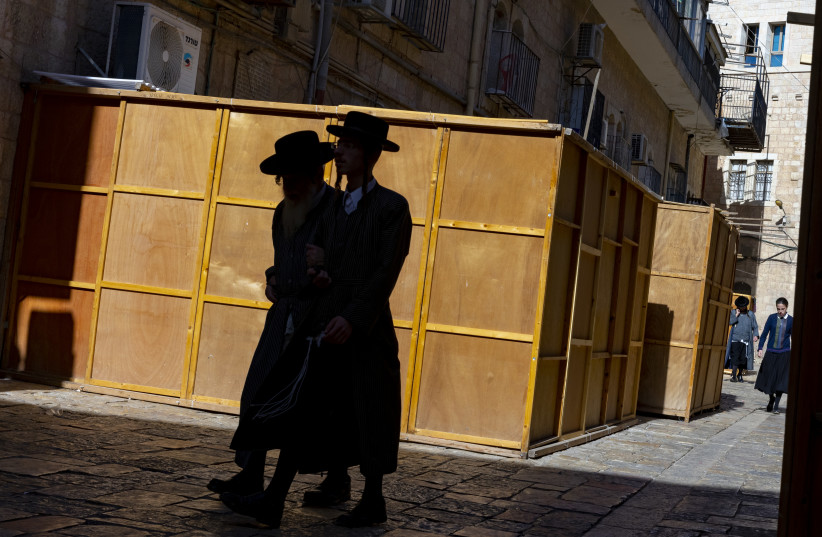The clue to grasping the meaning of Sukkot is its position in our calendar, following as it does so closely on the heels of Yom Kippur. The quick succession – only four days between them – of these watershed moments begs understanding.
I came across an answer to this mystery in the writings of one of our great sages from the Middle Ages, Rabbeinu Bechaya. Consider, he says, the four species we shake on Sukkot – the etrog, the fruit of a citron tree; the lulav, a date palm branch; hadassim, leaves from a myrtle tree; and aravot, leaves from a willow tree.
The common denominator, explains Rabbeinu Bechaya, is their connection to water. All four require a particularly large quantity of water to grow (the lulav grows in watered valleys; hadassim and aravot grow near rivers and lakes; and the etrog requires more water than other fruit trees). Additionally, all four, halachically, must be fresh for use during Sukkot. If they are dried out, you cannot use them.
Water represents life: when we bring these four species together, we celebrate and thank Hashem [God] for the fact that we are alive.
Now the connection to Rosh Hashanah and Yom Kippur becomes clear. On Rosh Hashanah and Yom Kippur, we pray for many things. We pray for a good year, for a sweet year, for all of God’s blessings. But, most fundamentally, we pray for life itself. The words of the mahzor are filled with so many rich examples. We ask Hashem: “The King, who desires life” to “remember us for life” and “write us in the book of life.”
Hayim, hayim, hayim. Over and over again – that is what we pray for. Because life is a privilege and we never take it for granted.
And so comes along Sukkot, immediately after Rosh Hashanah and Yom Kippur, when we have just confronted the fragility of our existence, and we thank Hashem for the very fact that we’re alive; that we have breath in our lungs and energy in our bodies. We bring together the four species, as fresh as can be, filled with as much moisture as possible, and we thank God for the life that He has given us.
We take them and we say the blessing of shehecheyanu: “Blessed are you Hashem, who has kept us alive, sustained us and brought us to this time.” Despite the continued challenging circumstances, this is nevertheless a time of pure celebration and joy – the kind of joy that elicits a shehecheyanu.
This year, after all we have seen, we feel the blessing of life even more intensely. On Sukkot, we also remind ourselves that life is not merely a physical experience. The source of the physical vitality of this world is Hashem, and the source of the life of our bodies is the divine soul He placed within us.
Consider how Hebrew, the holy language of the Torah, reflects this reality. The word hayim is plural because it refers to two dimensions of life, physical and spiritual. We live in physical bodies in a physical world – but the source of all life is spiritual. And to live life to the fullest, we need to live with body and soul, embracing both dimensions of what it means to be alive.
Interestingly, the Hebrew word for water, mayim, just like life, hayim, has no singular. We refer only to waters, never water, and to lives and not life. This reflects the fact that like life itself, there are two dimensions of water – physical and spiritual. It is powerfully significant then that on Sukkot we pray for rain, without which life cannot exist on earth. But when we pray for water – which, during the times of the Beit Hamikdash was expressed on Sukkot through the beautiful and meaningful service of pouring water on the altar – we are also praying for the spiritual waters of inspiration and connection, according to the Sefat Emet.
In the same way that we cannot live physically without water, we cannot live spiritually without the waters of the Torah, which connects us to our spiritual life source, Hashem, and our spiritual essence, our soul.
This Sukkot, as we bring together the four species, let us celebrate life in the fullest sense of the word – in two dimensions.
The writer is chief rabbi of South Africa.

